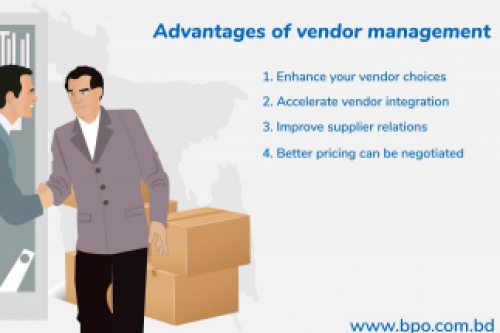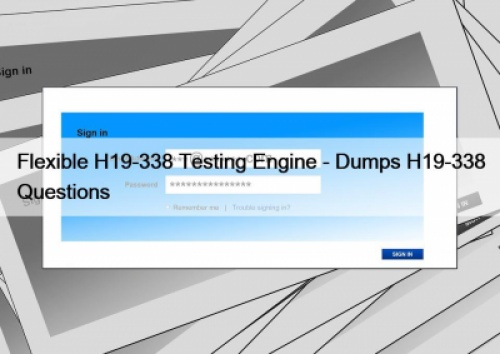What is vendor management?
Vendor management refers to the practices that companies employ to manage their suppliers, often known as vendors. Selecting suppliers, negotiating contracts, controlling prices, decreasing vendor-related risks, and guaranteeing service delivery are all examples of vendor management operations.
What is the significance of vendor management?
Vendors must be controlled to decrease the risk of supply chain interruption and to guarantee that products and services are supplied on time and to the desired level. Effective vendor management may assist businesses in developing closer connections with their vendors, which may lead to opportunities to negotiate better pricing.
The ultimate purpose of a vendor management system is to maximize your return on investment. When implemented appropriately, a vendor management system may result in long-term savings as well as increased revenues over time.
What is the Purpose of a Vendor Management System?
A vendor management system may assist many businesses better manage their outsourced workforce. It's an all-in-one platform that lets you save vendor contact information, maintain contracts, view spending, pay vendors directly, automate vendor onboarding, and much more.
BPO’s Vendor Management System
In the vendor management industry, BPO is a well-known name. Because it is one of the most solid and complete end-to-end solutions, we have named it the best overall.
You can manage your vendor network from contract administration to compliance and performance tracking with BPO. You may use the platform to pay suppliers directly, manage onboarding and offboarding procedures, track certifications, and much more.
With 65 % saying that they employ outside labor for core business operations and 91 % anticipating that use to increase over the next three years, a VMS is more important than ever.
Advantages of vendor management
Enhance your vendor choices
Accelerate vendor integration
Improve supplier relations
Better pricing can be negotiated.
Lower the vendor risk management of supply chain interruption.
Why should you use Vendor Managed Inventory?
The goal of Vendor Managed Inventory (VMI) is for both suppliers and buyers to gain. Using VMI can help you avoid the financial risks that come with traditional vendor managed inventory. When suppliers are compelled to call in emergency supplies or abruptly expand their output, they face financial risk. There is a financial penalty for purchasers who keep too much inventory, which the buyer may avoid by using Vendor Managed Inventories.
How to Create and Implement a Vendor Management Process
Vendor management process allows enterprises to get more value from their vendors throughout the lifespan of the partnership. A successful vendor management plan should center on corporate goals and acquire C-suite support. Vendor management process drivers include company-wide goals and KPIs, as well as a commitment to continual development.
What's the Distinction Between a Vendor and a Third Party?
Vendors and third parties are important parts of every business strategy, but they are not the same thing.
A vendor is an external entity that provides goods or services to a company, frequently as part of the supply chain. Examples include:
Payment processor
Consultant
Software developer
Website host
Supplier of raw materials
Third-party connections include not just the entities mentioned above, but also those with whom your company does business, such as:
Business associates
Investors in venture capital
Regulatory bodies
Donations are made to non-profit organizations.
Customers
How to Create a Vendor Risk Management Plan
An effective vendor risk management programme needs thorough preparation by a committed team, ongoing monitoring, and dedication to the process at all stages. The steps are as follows:
Step 1
These are crucial to the success of your programme. The policy should clarify how vendor risk will be addressed. Procedure documents should define roles and duties for top vendor management services and your business lines.
Step 2
Check out your vendors before signing contracts with them. Questionnaires and risk assessments are useful for comparing suppliers and assigning security ratings. They should offer proof of certificates and penetration testing findings. When required, perform site visits.
Step 3
Establish contract criteria for review, approval, monitoring, and contract storage. Your contracts should cover service level agreements (SLA), issue escalation, vendor termination, and security documentation. Templates are useful, but they should be customized for each vendor management services depending on their roles, responsibilities, and compliance needs.
Step 4
Quality governance, risk, and compliance (GRC) software may help you save money and time. Many of the duties described here can be performed by automation, such as creating and categorizing questionnaires, staying on top of compliance requirements, and regularly monitoring third-party providers.
Focus Points
The order came from on high, and there is no getting around it: you are in charge of your organization's vendor management process.
Vendor Management Services help to keep the buyer/vendor relationship balanced and the aims of both firms aligned.
Vendor Risk Management technology assists companies in assessing, monitoring, and managing their risk exposure from third-party suppliers (TPSs) who supply IT goods and services or have access to company information.
How to Select Vendor Management Systems?
Vendor performance is assessed by developing vendor key performance indicators, or KPIs. A key performance indicator (KPI) is any business metric that can be measured over time in order to enhance it. Invoice accuracy, lead time, vendor availability, and defect rate are examples of vendor KPIs.
















